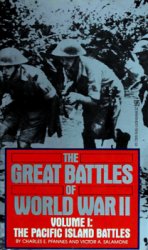The decision to produce an international exploration of the Celtic world between 600 BC and AD 600 rests upon the premiss that the ancient Celts existed in some manner, whether self-defined or as a group of peoples who were classified as such by communities who belonged to a separate cultural - and literate - tradition. The area of temperate Europe north of the Alps and beyond the Mediterranean littoral generally referred to as Celtic was virtually non-literate until it came fully within the orbit of the classical world at the end of the first millennium BC. It was observers from the Mediterranean lands of Greece and Rome who called their northern neighbours Celts. But are we, as modern investigators, justified in speaking of the ancient inhabitants of ‘barbarian’ Europe as Celts? Who were the Celts? How should we define this term? It is interesting that the same questions do not tend to be asked of - say - the Roman world. We are secure with Romans because they identified themselves as such: Civis Romanus sum (‘I am a Roman citizen’). We cannot tell whether a comparable Celtic consciousness ever existed.
It is pertinent to pose these questions in a survey such as this because the existence of Celts in any meaningful sense in antiquity continues to be a focus of controversy and debate. Many prehistorians (including some contributors to this volume) argue that it is spurious to identify iron age Europeans as Celts. Other investigators are more comfortable with this nomenclature, as long as its meaning is specifically defined. On the opposite pole to the sceptics are the committed Celticists who perceive a genuine continuity of tradition between the ancient peoples of northern Europe and the modern inhabitants of Ireland, Scotland, Wales, Cornwall, the Isle of Man and Brittany. The debate is active and well-nourished, and present contributors exhibit its diversity in both methodology and approach. No attempt has been made on the part of the editor to ‘iron out’ controversy or to present a unidirectional approach. It is important to reflect academic debate as it exists.
The problem of defining what is (or should be) meant by the terms ‘Celt’ and ‘Celtic’ centres around the relationship, if any, between material culture, ethnicity and language. Any construction of later prehistoric Europe is based upon information which is both fragmentary and ambiguous. The evidence is (like many Celtic gods) triple-headed and consists of archaeology, documentary sources and linguistic material. These three categories of evidence combine to present us with a Celtic
World which, by the last few centuries BC, appears to have stretched from Ireland to eastern Europe and beyond, to Galatia (see map p. xxiv). The term ‘Celts’ is one to which we are introduced by Greek and Roman observers of their ‘barbarian’ neighbours north of the Alps. But did these people think of themselves as Celtic? Did they have an ethnic consciousness of themselves as possessing any kind of homogeneity within ancient Europe? With what degree of precision did Mediterranean commentators apply this descriptive label? Some scholars would argue that ‘Celt’ was maybe little more than a loose term for people different from those of the classical world; ‘foreign’, ‘less civilized’, ‘marginal’, ‘fringe’, ‘other’ people. Was there more to Celticness than that? In my opinion, this is an interesting but rather too extreme viewpoint: the Greek historian Herodotus made a clear distinction between those non-Greek peoples whom he called Celts and others, such as Scythians and Ethiopians. But the precision with which the term ‘Celt’ was used by writers from the Mediterranean world may well have varied widely: Herodotus, Livy and Caesar may well all be speaking of different groups even though they used the same word.
Classical commentators on the Celts reflected a school of thought in the GraecoRoman world which appears to have recognized a group of peoples to their north as possessing sufficient cultural features in common to justify their endowment with a common name, the ‘Celts’. We need to raise the question of how far we can trace this commonality of tradition in both archaeological evidence for material culture and in language. But for the moment let us remain with the contemporary documentary sources. Allusion is first made to Celts by name in the writings of such Greek historians as Hecataeus of Miletus in about 500 BC and Herodotus in the fifth century BC. These authors speak of Keltoi. Later Mediterranean writers such as Livy and Polybius chronicle the expansion of the Celts during the fourth and third centuries. These writers inform us that by the later third century BC the Celts were heavily defeated by the Romans and thereafter suffered a series of setbacks and reversals, until the Celtic heartlands of Gaul were annexed by the Romans in the mid-first century BC. Britain is never referred to by ancient authors as Celtic but Caesar recognized the similarities between Britain and Gaul. Tacitus and other Roman authors record the conquest of Britain, which was more or less complete by the later first century AD.
Early linguistic evidence for the Celts is extremely sparse before the Roman period because northern Europe was virtually non-literate during most of the first millennium BC. When writing was adopted in the Celtic world in the late first millennium, it appeared almost entirely in Greek or Latin. Early Celtic linguistic evidence, such as it is, consists of inscriptions, coin legends and the names of people and places contained within classical documents. These early sources suggest that by the time of the Roman occupation, at the end of the first millennium BC, Celtic languages were spoken in Britain, Gaul, north Italy, Spain, central and eastern Europe.
Material culture perhaps offers the best hope of approaching and identifying the ancient Celts. In archaeological terms, Celtic Europe is distinguished from previous prehistoric cultures by the adoption of iron as a commonly utilized metal. The archaeological record of later European prehistory suggests that the historical Celts (those named as such in documentary sources) may have had their origins within the cultures of the later Bronze Age. In terms of their archaeological presence, it does not make sense to think of the Celts as suddenly appearing on the European stage in the mid-first millennium BC. It is more likely that groups of people living in Europe became ‘Celtic’ by accretion, through process of time.
The material culture of central and northern Europe in the later Bronze Age of the mid-late second millennium BC is known to archaeologists as the ‘Urnfield’ tradition, a term derived from a distinctive burial rite in which some members of the population were cremated, their burnt bones being interred within pots, in flat cemeteries. In addition, this Urnfield tradition is characterized by the new ability of metalsmiths to fashion bronze into thin sheets which were formed into vessels, body-armour and shields. The new technology may have been stimulated by the collapse of the great hegemonies of southern Europe, namely the Mycenaean and Hittite Empires, the demise of which perhaps released onto the market large supplies of metal for central European use. The Urnfield tradition occurred widely in regions later occupied by iron age Celts and some scholars would go so far as to apply the label of ‘proto-Celts’ to the people to whom this Bronze Age culture belonged.
During the eighth century BC, new elements in material culture began to manifest themselves in central Europe. New metal types associated with horse-gear and riding are indicative of the presence of warrior-horsemen, who might be regarded as the antecedents of the Celtic equites, the horse-owning knights alluded to by Caesar in his Gallic 'lUar. These early iron age cavalrymen used long slashing swords, sometimes made of bronze, sometimes of iron. This new material culture has been called ‘Hallstatt’, after the so-called type-site, a great cemetery at Hallstatt in Austria, which housed the bodies of local people involved in salt-mining, trading and the control of the ‘Salzkammergut’ (salt-route) of the region around modern Hallein. This cemetery was first used during the later Bronze Age, but also produced large quantities of rich metalwork belonging to the earliest Iron Age. The same distinctive artefact-types found at Hallstatt have been recognized over wide areas of Europe. The bronze age material from the site has been designated Ha A and B and that of the Early Iron Age, Ha C and D. It is the material culture of the later Hallstatt, Iron Age, phases which is often considered to be the earliest evidence of the European Celts. This Hallstatt tradition is distinctive in the archaeological record for its wealth and its clear evidence for close trading links with the classical world. The upper echelons of society in the seventh and sixth centuries BC are represented by rich inhumation burials, like those of Hohmichele and Hochdorf in Germany and Vix in Burgundy, the dead often being interred in wooden mortuary houses, accompanied by four-wheeled wagons, weapons and luxury goods, including jewellery and feasting equipment, some of which came from the Mediterranean world. Little is known of the smaller settlements inhabited by these early iron age communities, but large fortified centres, like the Heuneburg near the Hohmichele grave and Mont Lassois near Vix, are presumed to have been the dwelling-places, and perhaps the power bases, of the high-ranking individuals buried nearby.
Archaeological evidence suggests that, by the early fifth century BC, the centres of power and wealth had shifted north and west to the Rhineland and the Marne. This may have occurred because, at a time when Etruria was becoming a major power, the trade-routes were perhaps reorientated to facilitate direct trading between the Celts and the Etruscans. This geographical shift is marked by the appearance of new elements in material culture, which archaeologists call La Tene, after the metalwork from the site of the same name on Lake Neuchatel in Switzerland. Precious items of war-gear and other implements, together with animals, were deliberately deposited in the water over a long period, presumably as a series of votive acts. The La Tene phase of the European Iron Age demonstrates the presence of a warrior-aristocracy, some of whom were still buried with vehicles, but now with a light, two-wheeled cart or chariot replacing the heavy wagon of the later Hallstatt period. The La Tene tradition is above all characterized by a fine art, essentially an aristocratic art which was employed principally for the embellishment of metalwork. La Tene artists owed much to their Hallstatt forebears but they were also heavily influenced by themes and art forms from both the classical world and the Near East. Celtic art was dominated by abstract, geometric designs, but images from the natural world - foliage, animals and human faces - were often incorporated as integral components of these designs. The material culture of the La Tene phase represents the floruit of Celtic civilization. The archaeological record presents us with a picture of a heroic society in which war, feasting and display were important, a society which is recognizable as that alluded to by classical chroniclers of their ‘Celtic’ neighbours.
Celtic culture per se is generally considered to come to an end around the end of the first century BC, when most of temperate Europe was subjected to the domination of the Roman world. The new hybrid culture resulting from the interaction between Roman and Indigenous Celtic ideas retained many elements of pre-Roman tradition, whilst at the same time adopting new influences from Graeco-Roman Europe. The new ‘Romano-Celtic’ culture is nowhere better represented than by religious imagery which manifested itself in stone and other media. Here, GraecoRoman iconographic traditions of depicting divine figures in human form were imported to Celtic lands and used by the native inhabitants of those regions to represent their own distinctive religious vision of the supernatural world. Deities essentially alien to the classical pantheon were now depicted for the first time in Gaul, the Rhineland, Britain and elsewhere, and the Celtic and Roman cult systems combined to form a rich, dynamic new Romano-Celtic religion.
It will be clear from the foregoing discussion that there are major problems in defining Celts and Celticness. The difficulties arise partly from the fact that ‘Celts’ and ‘Celtic’ are terms which mean different things to different people. The archaeological approach to the Celtic question is different from that of the linguists and perhaps also from that of anthropologists. So the varied types of evidence at our disposal - archaeological, linguistic and literary - themselves cause problems of determination. The only way to deal with this conflict of approaches is to recognize that they are, to an extent, irreconcilable. There is a lack of congruence between language, material culture and ethnicity so that direct correlations cannot be made between the evidence for the distribution of language and that of archaeological indicators. It is equally impossible to make precise links between these categories of evidence and actual peoples. Ethnic boundaries are fluid, blurred and mutable; language cannot be used to define populations with any precision; specific artefacts and settlement types can spread through channels other than those of their use by
Ethnically definable groups. The three main categories of evidence for the ancient Celts may overlap or correlate in certain respects, but each contains its own parameters specific to itself.
Ancient literary sources, archaeological evidence and, to a lesser extent, language, all contrive to present us with a picture of a Celtic world which, in its heyday (the later first millennium BC), stretched from Ireland and Spain in the west and Scotland in the north to Czechoslovakia in the east and northern Italy in the south and even beyond Europe to Asia Minor. But we need to examine the nature of that Celtic culture and how it expanded from its original central European heartlands. When we speak of Celtic expansion over Europe, how far do we perceive this in terms of vast folk movements? Classical writers refer to marauding bands of Celts sacking Rome in the early fourth century BC, Delphi in the early third century, and to the establishment of the Celtic Galatians in Asia Minor at the same time. But some Celtic expansion was surely the result of the spread of fashions, ideas and traditions at least as much as of actual ethnic Celts.
A problem which is of the same order of magnitude as the origin of the Celts is what happened to this great European culture. The Roman Empire in the west disintegrated during the fifth century AD and with that collapse of centralized power the Celts also apparently disappeared from all but a few peripheral regions in the extreme west. The areas of Europe previously under Roman influence, and in which Celtic and Roman culture had merged, were overrun by a new Germanic culture which seems largely to have obliterated Celtic tradition in central Europe, Gaul and much of Britain. But it is questionable how different these ‘free’ Germanic peoples were, in ethnic terms, from the original Celts, although they spoke a different language. After the collapse of Roman power, the western areas that had been on the fringe of Celtic tradition became its focus and remain its focus: Ireland, Scotland, Wales and Brittany. Only there (together with Cornwall and the Isle of Man) did Celtic languages survive, and it is these areas which, during the later first and earlier second millennium AD, produced a vernacular Celtic mythic tradition on the one hand, and literary and archaeological evidence for early western Christianity on the other.




 World History
World History









